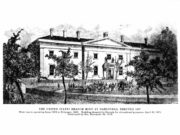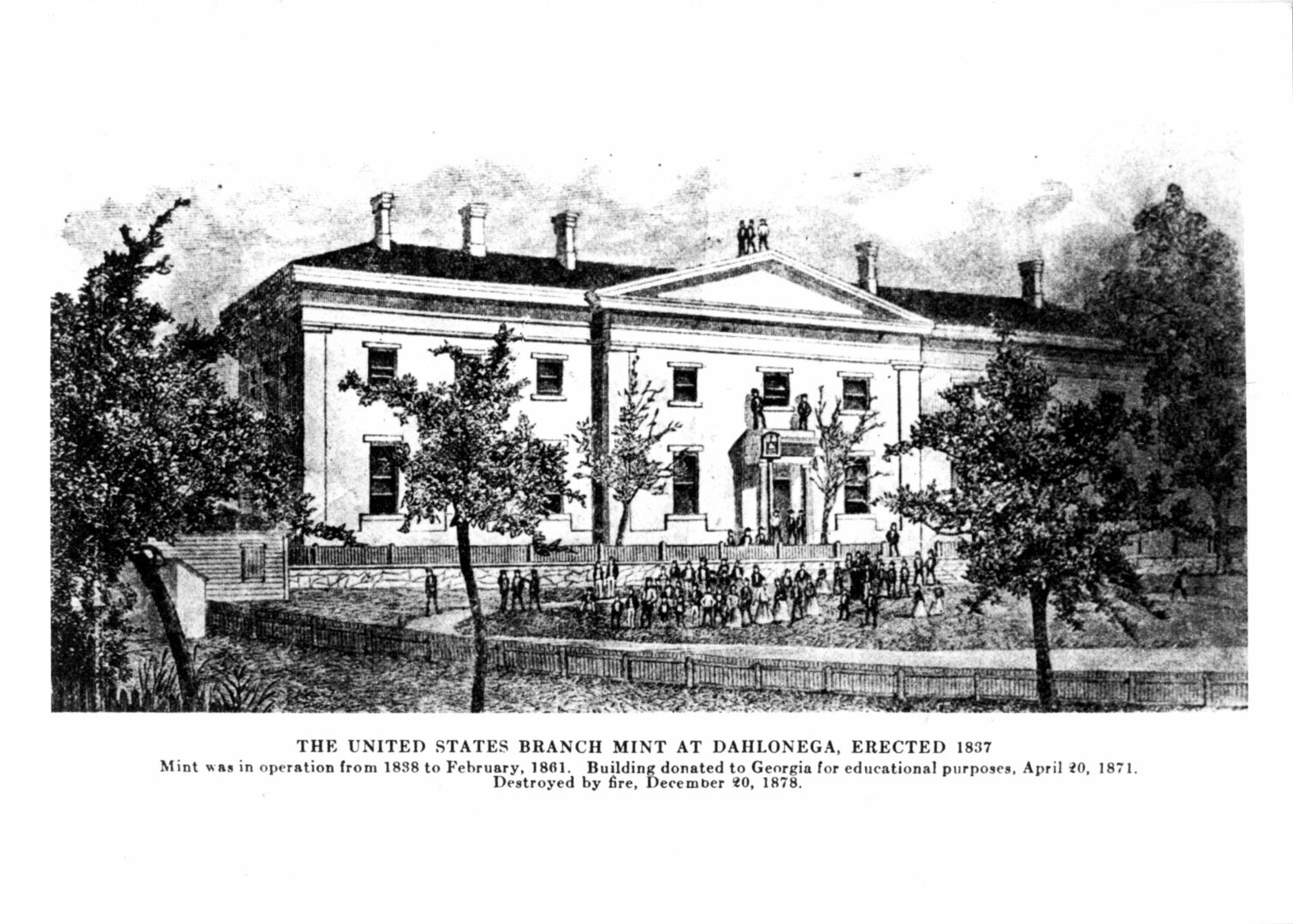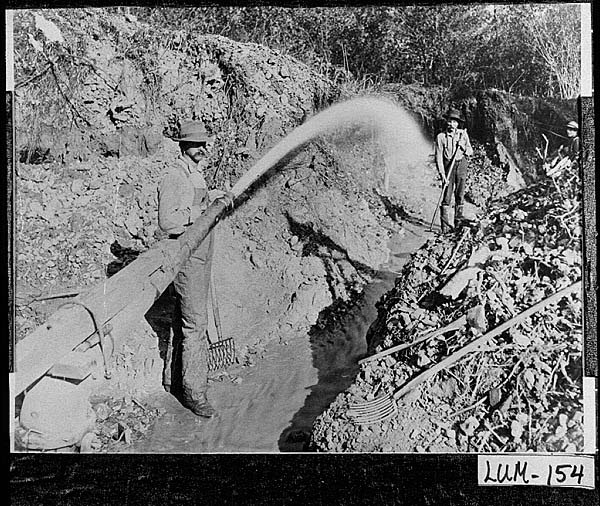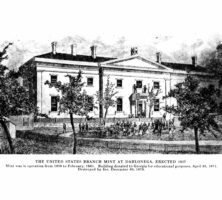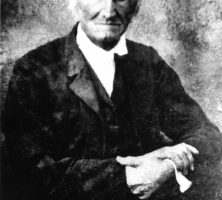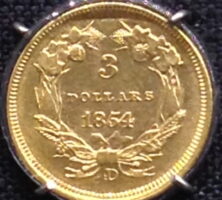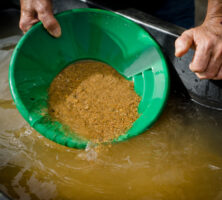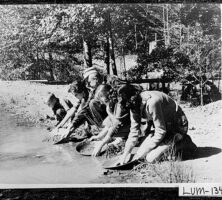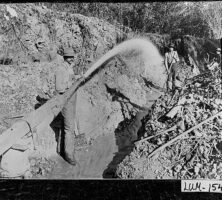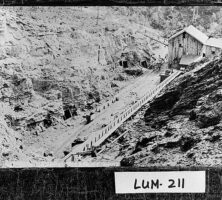There are several popular stories of the beginning of Georgia’s gold rush; but in fact, no one is really certain who made the first discovery or when. According to one anecdote, John Witheroods found a three-ounce nugget along Duke’s Creek in Habersham County (present-day White County). Another says that Jesse Hogan, a prospector from North Carolina, found gold on Ward’s Creek near Dahlonega. Yet another finds a young Benjamin Parks kicking up an unusual-looking stone while on the lookout for deer west of the Chestatee River in 1828. Despite the popularity of these claims, no documented evidence for gold in Georgia is found until August 1, 1829, when a Milledgeville newspaper, the Georgia Journal, ran the following notice.
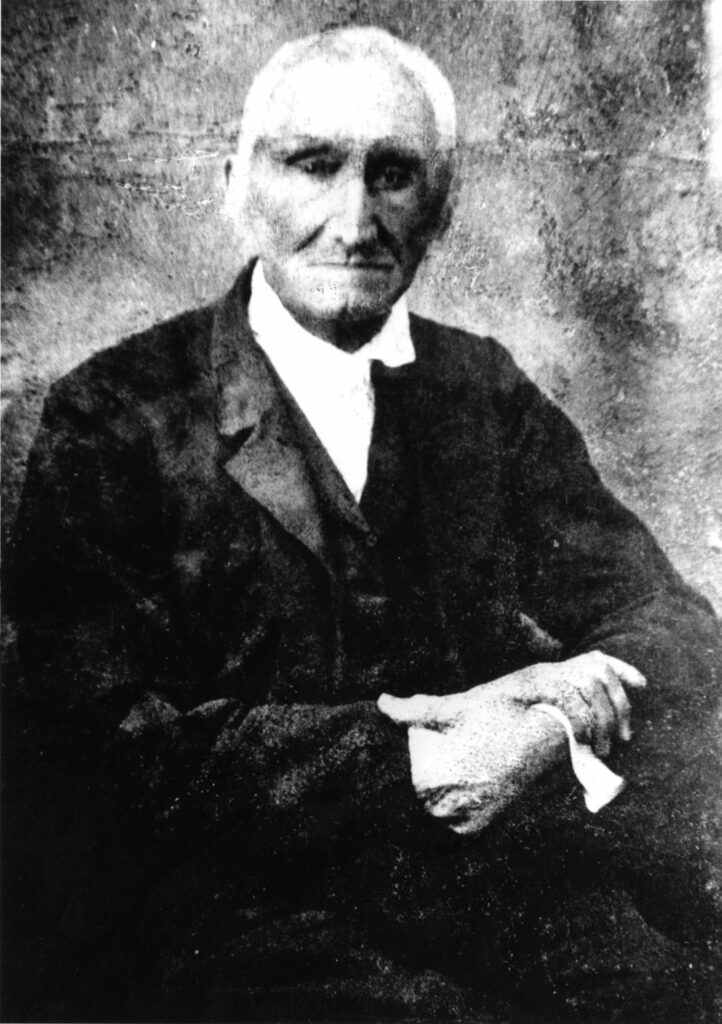
Courtesy of Georgia Archives.
GOLD.—A gentleman of the first respectability in Habersham County, writes us thus under date of 22d July: “Two gold mines have just been discovered in this county, and preparations are making to bring these hidden treasures of the earth to use.” So it appears that what we long anticipated has come to pass at last, namely, that the gold region of North and South Carolina, would be found to extend into Georgia.
The Great Intrusion
By late 1829, north Georgia, known at the time as the Cherokee Nation, was flooded by thousands of prospectors lusting for gold. Niles’ Register reported in the spring of 1830 that four thousand miners were working along Yahoola Creek alone. While in his nineties, Benjamin Parks recalled the scene in the Atlanta Constitution (July 15, 1894):
The news got abroad, and such excitement you never saw. It seemed within a few days as if the whole world must have heard of it, for men came from every state I had ever heard of. They came afoot, on horseback and in wagons, acting more like crazy men than anything else. All the way from where Dahlonega now stands to Nuckollsville [Auraria] there were men panning out of the branches and making holes in the hillsides.
The sudden influx of miners into the Cherokee Nation was known even at the time as the Great Intrusion. One writer said in the Cherokee Phoenix, “Our neighbors who regard no law and pay no respects to the laws of humanity are now reaping a plentiful harvest. . . . We are an abused people.” But there was little the Cherokees could do; it seemed the louder they protested, the more eagerly the miners came.
Gold rush towns sprang up quickly in north Georgia, particularly near the center of the gold region in present-day Lumpkin County. Auraria became an instant boomtown, growing to a population of 1,000 by 1832. The county seat, called Licklog at the time, in 1833 became known as Dahlonega, for the Cherokee word talonega, meaning either golden or yellow. Within a few months after its establishment nearly 1,000 people were crowded into the settlement, with about 5,000 people in the surrounding county.
Gold Mining
The great majority of this multitude was directly involved in the search for gold. With pan and shovel, they roamed up and down the valleys and hollows, looking for a promising spot. These early miners were engaged in what they called “deposit” mining, generally known as placer mining. The term refers to gold that has washed down from the hillsides and collected along mountain streams. When miners found a location that showed “good color,” they set up camp and began working the area in earnest. A variety of tools were used to wash these deposits and extract the fine gold particles. The river bottoms were very attractive places to search for gold; miners frequently drifted flatboats into the Chestatee and Etowah rivers and dredged up rich sand and gravel.
Placer mining was the most popular type among the early gold diggers because it required very little capital. But as more people moved into the gold region and towns began to grow, money became available for investment in vein, or hard-rock, mining. The equipment required for vein mining was considerably more expensive than that necessary for washing placers. Once tunnels had been dug underground, rafters had to be put in place to avert cave-ins. After the ore was brought up from the mines, it was crushed in a stamp mill. These mills ranged in size and complexity from a single stamp suspended from a bent-over sapling to as many as ten stamps driven by a water wheel.
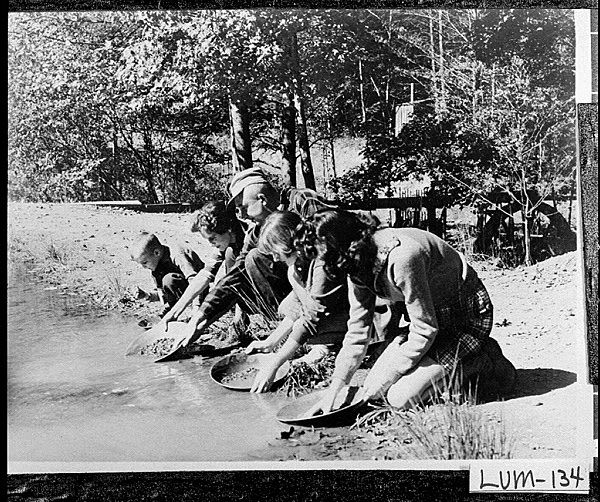
Courtesy of Georgia Archives.
The Dahlonega Mint
From the beginning of the gold rush, trade in the gold region suffered from a limited circulation of currency. Merchants insisted on immediate payment in cash or gold, and it was the merchants who determined the gold’s worth. What the miners needed was a local mint where they could have their gold assayed and exchanged for gold coins. Congress soon authorized the establishment of the federal Branch Mint at Dahlonega, and in 1838 the new mint went into operation. It coined more than $100,000 worth of gold in its first year, and by the time it closed in 1861, it had produced almost 1.5 million gold coins with a face value of more than $6 million.
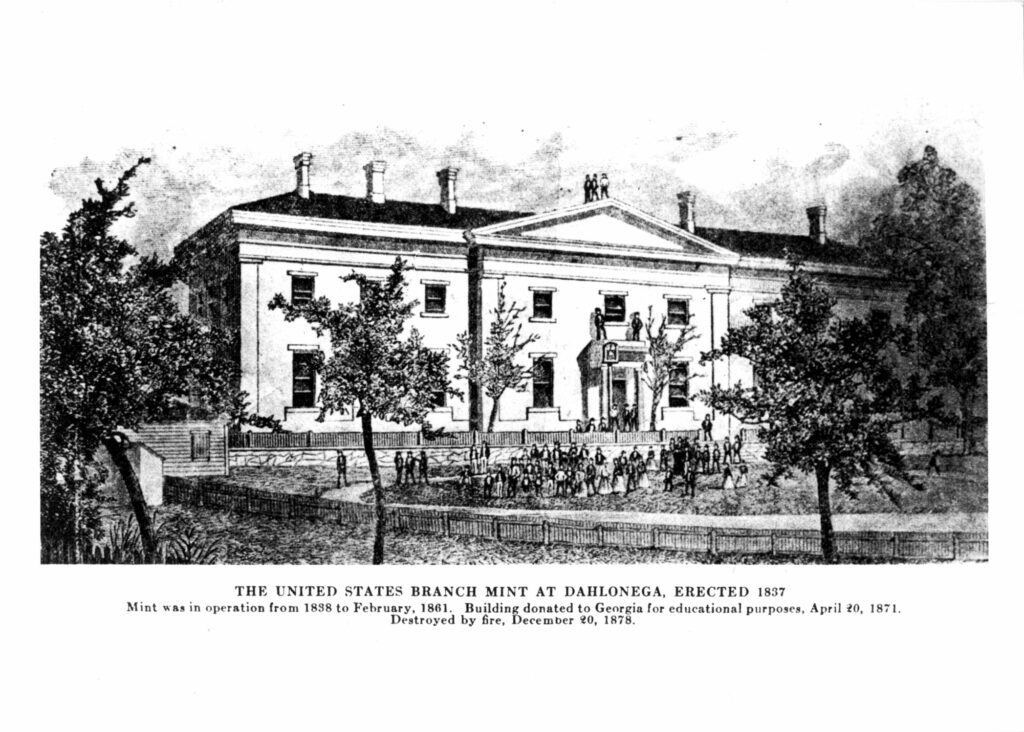
Courtesy of Dahlonega Mountain Signal
The Trail of Tears
When the mint went into operation, many saw it as a national affirmation of Georgia’s efforts over the preceding decade. To the area’s residents, this federal establishment was a seal of approval and a promise of future prosperity. But it was a prosperity that was to be denied the native Cherokees. Between 1805 and 1832 the state of Georgia held lotteries to distribute land seized from the Cherokees and Creeks. Nearly three-quarters of the land in Georgia was allocated by the lottery system. Finally, the U.S. Army drove the Cherokees northwestward to Indian Territory in present-day Oklahoma during the bitterly cold winter of 1838-39. Deprived of proper food and clothing, at least 4,000—one-fifth of the entire Cherokee population—died on the journey. The forced migration became known as the Trail of Tears.
The Gold Plays Out
Just as the mint began production and the last of the Cherokees were removed, the reason for both began to disappear: the gold was playing out. By the early 1840s it was becoming difficult for miners to make a living washing the placer deposits, and hard-rock gold veins were becoming harder to mine. The heyday of the gold rush was over.
In 1849 word of the great California gold strikes reached the miners of Georgia, and they began preparing to go west. Dr. Matthew Stephenson, assayer at the Dahlonega Mint, called for a meeting at the town square to discuss the move. Mounting the courthouse steps to address a crowd of about 200 miners, Stephenson chastised them for allowing their heads to be turned by fantasies of gold in California. Waving his hand toward Findley Ridge, just south of Dahlonega, Stephenson shouted, “Why go to California? In that ridge lies more gold than man ever dreamt of. There’s millions in it.” Despite Stephenson’s admonitions, the miners left for California in droves.
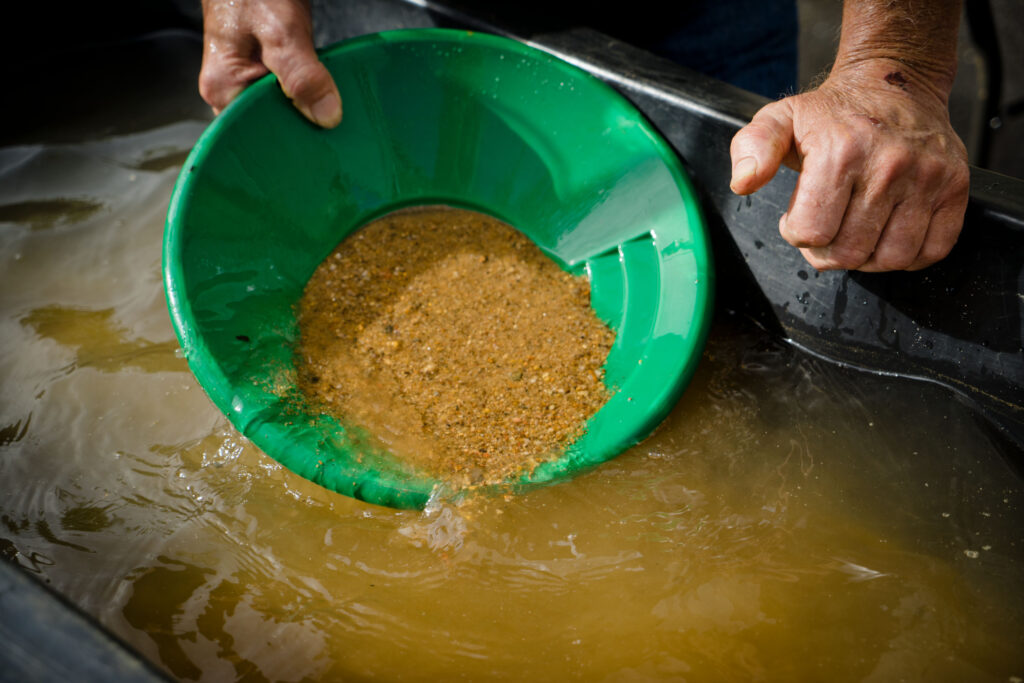
Courtesy of Explore Georgia.
Gold Fever Endures
Gold mining in Georgia saw a brief resurgence in the 1850s, when miners brought the hydraulic mining technique back from California. However, the mining industry again fell into a slump during the Civil War (1861-65), and the Dahlonega Mint closed.
Mining continued on a limited scale until the turn of the twentieth century, when the advent of new mining technologies gave rise to a flurry of new activity. Several companies set up gold-processing plants, one of which, erected by the Dahlonega Consolidated Gold Mining Company on Yahoola Creek, was the largest ever built east of the Mississippi River. None of the operations were able to turn a profit, though, and they soon went out of business.
There was sporadic interest in mining Georgia gold on a commercial scale throughout the twentieth century, and the spirit of gold fever is still strong in the region. Expressions of that spirit are visible all across north Georgia: the old Lumpkin County Courthouse, built in 1836, today houses the Dahlonega Gold Museum; thirteen ounces of gold covers the steeple of North Georgia College’s Price Memorial Hall; forty-three ounces of gold covers the dome of Georgia’s state capitol. And that spirit is recaptured every October during the Gold Rush Days Festival, when would-be prospectors reliving the old gold-mining days pour into Dahlonega.
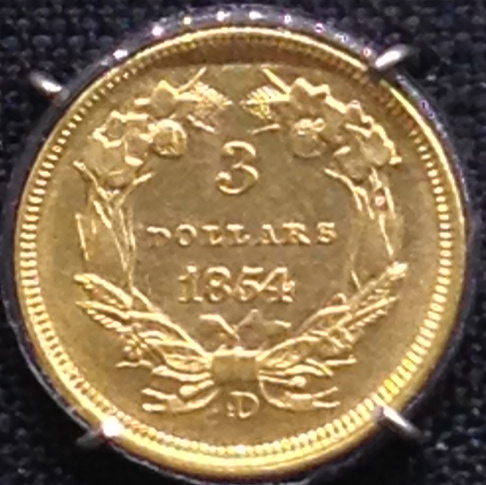
Photograph from Wikimedia


